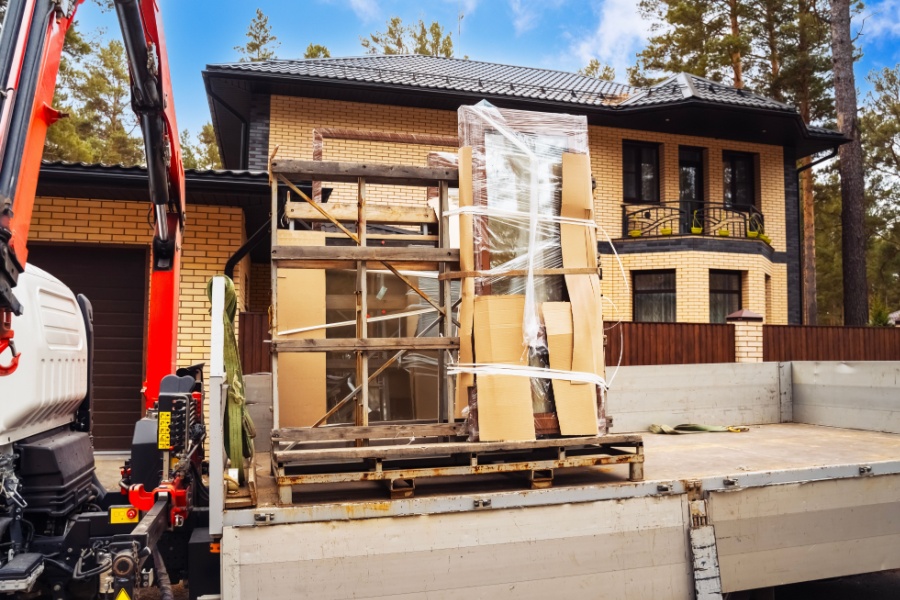At its core, reverse logistics involves managing product returns so businesses can refurbish or recycle them, depending on the reason for the return.
An effective reverse logistics strategy is vital as businesses look to meet growing customer expectations for efficiency, transparency, and sustainability. Customers don't want to be left waiting, and the faster you get a new product into their hands, the happier they'll be with your service.
Understanding the latest trends in reverse logistics and learning how these advancements streamline operations and enhance customer satisfaction is vital moving forward. Here's a look at how these trends can help you optimize the returns process and drive overall supply chain efficiency to produce greater customer satisfaction that maximizes brand loyalty.
About Reverse Logistics
Reverse logistics is the process of moving goods from their final destination back to the manufacturer or seller for returns, refurbishing, recycling, or disposal. In other words, it's everything that happens after a product has been sold and needs to come back to the sender.
For example, when a customer returns a pair of pants because they didn't fit, the retailer's system for handling the return is part of their reverse logistics. Other processes include refurbishing, where used products are restored to a like-new condition and resold, and recycling, where products or their components are broken down and reused.
Effective reverse logistics is crucial because it:
- Helps businesses recover value from returned goods, reducing waste and saving costs;
- Enhances customer satisfaction by providing straightforward and efficient return options; and
- Supports sustainability efforts by promoting recycling and reducing the environmental impact.
A solid reverse logistics system can give your business a significant edge over the competition by driving customer satisfaction and saving money by reselling returned products as soon as possible.
Latest Trends in Reverse Logistics
The reverse logistics industry is evolving to keep up with customer demand. Today's customers want immediate resolutions to their problems, so less time wasted initiating and finalizing returns equals more money saved and happier customers in the long run.
Some of the latest trends in reverse logistics include the following.
Advanced Technology Integration
Advanced technology integration is revolutionizing reverse logistics, making processes faster and more efficient. For instance, artificial intelligence (AI) and machine learning (ML) use predictive analytics to manage returns better. These tools analyze past return patterns to forecast future returns, helping businesses prepare and respond more effectively.
Automation is another game-changer. Automated systems can sort and process returned items much faster than humans, reducing delays and errors. This technology speeds up the entire reverse logistics process, getting products back on shelves or recycled more quickly.
The Internet of Things (IoT) also plays a significant role. IoT devices enable real-time tracking of returned items, allowing businesses to monitor their journey back to the warehouse. This real-time data helps improve inventory management by providing precise information about the status and location of returns.
These advanced technologies streamline reverse logistics, making it more efficient, accurate, and responsive to business needs and customer expectations.
Investing in Sustainable Practices
Sustainable practices are becoming essential in reverse logistics, helping align operations with environmental goals. For example, some companies now embrace circular economy initiatives, which focus on reusing, refurbishing, and recycling products instead of throwing them away.
Eco-friendly packaging materials are also vital to sustainable practices. Using biodegradable or recyclable materials for packaging minimizes waste and appeals to environmentally conscious consumers.
Green logistics involves strategies to reduce the carbon footprint of reverse logistics operations. This process can include optimizing routes to reduce fuel consumption and adopting sustainable transportation methods like electric or hybrid delivery vehicles.
By implementing sustainable practices, businesses protect the environment while building a positive brand image that appeals to more customers and meets the growing demand for eco-friendly business practices.
Adopting Customer-Centric Approaches
To keep your customers happy, you want to make the returns process as smooth and hassle-free as possible. Achieving this goal begins with seamless return policies that are easy to understand and follow. Clear, no-hassle return procedures boost customer satisfaction by simplifying the process of sending back unwanted items.
Enhanced communication is also crucial. Providing real-time updates on the status of returns keeps customers informed and reduces uncertainty.
Additionally, clear guidelines and comprehensive FAQs help customers easily navigate the returns process. The more information you provide, the more straightforward the process becomes for customers. Businesses can foster trust and loyalty by prioritizing these customer-friendly practices, ultimately enhancing the overall customer experience.
Using Data-Driven Decision Making
Data-driven decision-making is transforming reverse logistics through leveraging big data analytics. By analyzing return patterns, businesses can identify common reasons for returns and adjust their processes accordingly, improving efficiency and reducing future returns.
Incorporating customer feedback is equally important. By integrating insights from return reasons, companies can refine their product offerings and address specific issues that lead to returns.
Utilizing data this way optimizes reverse logistics and fosters improved customer satisfaction and loyalty.
Welcoming These New Trends
Embracing new trends in reverse logistics enhances operations and customer relations, creates faster processing times, and significantly reduces operational costs.
By adopting these new trends in reverse logistics, businesses can improve their supply chain operations and strengthen their brand reputations, ultimately driving long-term success.
Innovations in reverse logistics are bound to follow, too, so you'll want to stay current on the industry's latest trends to ensure you're ready to adopt them as they emerge. The result will be a streamlined returns process that never leaves customers waiting for a resolution, driving brand loyalty and more sales in the future.




